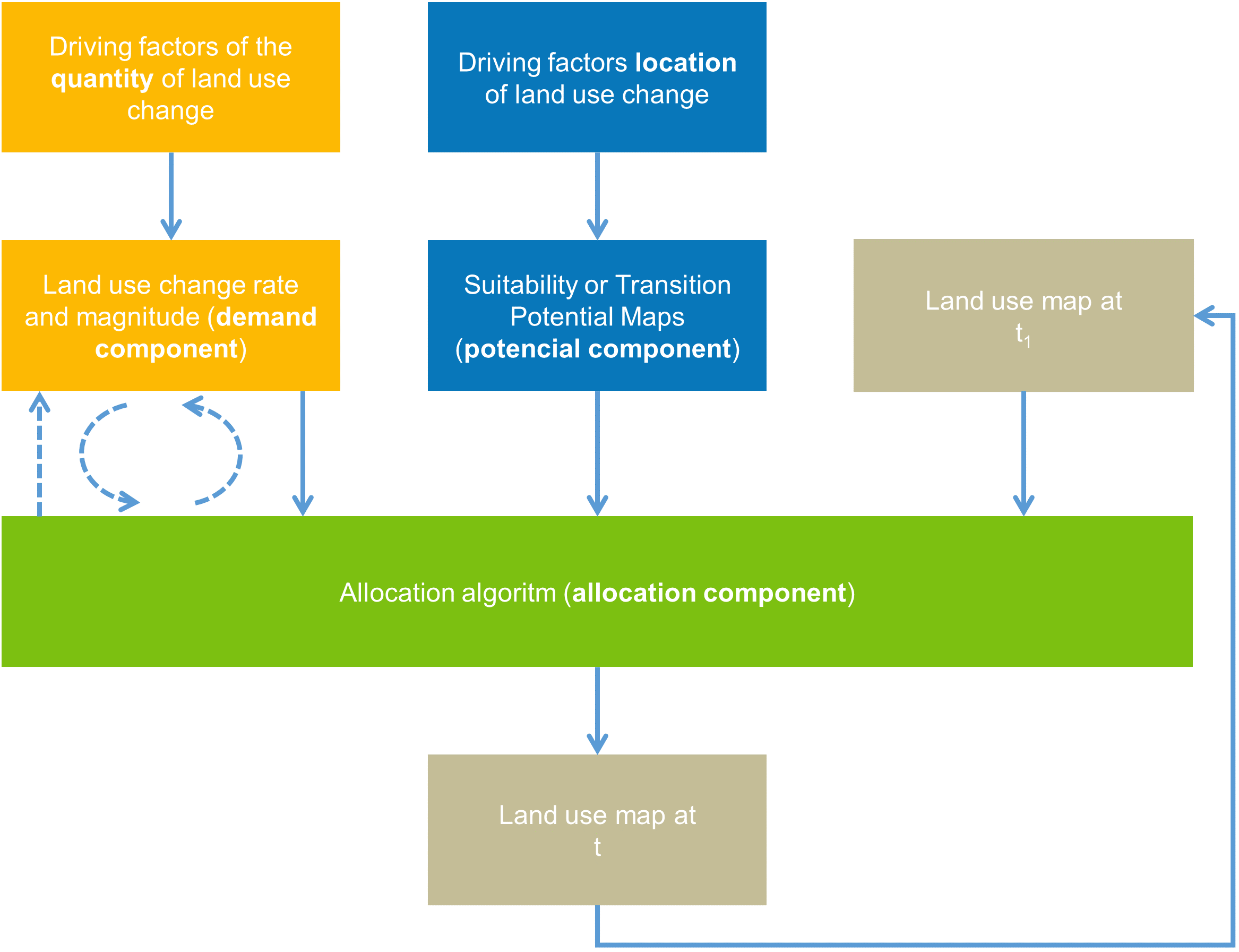Conceptual proposal
There are many different types of LUCC models which can be classified according to model goal, scale, technical approach or underlying theory. In spite this diversity of modeling approaches, a common structure can be identified in several spatially explicit models (Verburg et al., 2006; Eastman et al., 2005), as Figure 1 illustrates. In general, such models are organized in top-down manner, in which a demand for change is spatially allocated according to cell suitability. In such models, three main components can be identified: a demand calculation; a potential transition (suitability) estimation for each cell, usually based on statistical analysis; and an allocation procedure. Several well known LUCC models follow this structure, including CLUE family (Veldkamp and Fresco, 1996; Verburg et al., 1999; Verburg et al. 2002), Dinamica(Soares-Filho et al., 2002), and GEOMOD (Pontius et al. 2001), using a range of different approaches and techniques for the three components (Eastman et al., 2009; Lesschen et al., 2007). However, these models are implemented in different computing platforms, their code is in general not open, and they cannot be easily modified or combined.
LuccME allows the construction of new models, combining elements of the previously defined Demand, Potential and Allocation components, designed according to ideas of the main models found in the literature. In LuccME, the components can be chosen and modified according to the needs of a given application and scale of analysis, and easily parameterized through a simple user interface.
Generic structure of spatially explicity LUCC Models (adapted from Verburg et.al. 2006)



